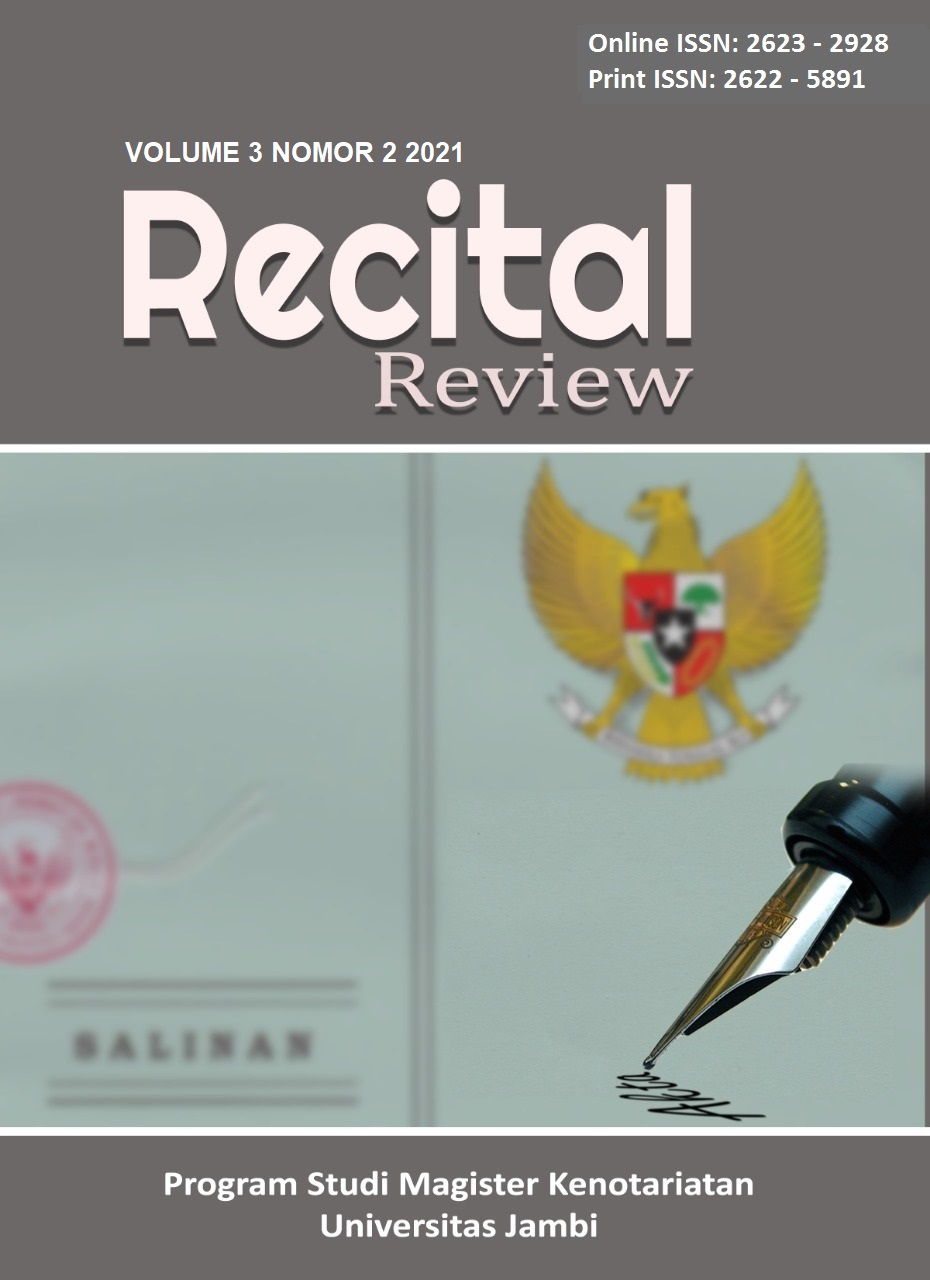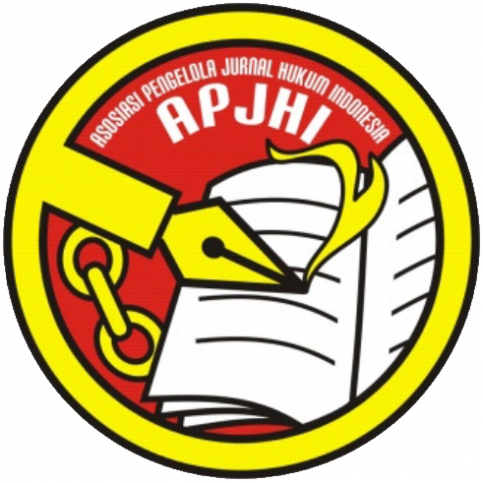Perjanjian Penyerahan Jaminan Sebagai Penyelesaian Hutang Di Hadapan Notaris
DOI:
https://doi.org/10.22437/rr.v3i2.14293Keywords:
AYDA, deed of sale & purchase, mortgage rightAbstract
The notary makes an agreement regarding AYDA (repossessed assets) which aims to authorize the bank represented by one of its directors.The existence of an agreement on the delivery of collateral as a debt settlement before a notary that is emerging in banking practice is certainly expected to provide legal certainty for both the debtor, the owner of the collateral and the bank as the creditor. However, in the laws and regulations in Indonesia there is no regulation that specifically regulates the agreement on the delivery of collateral as debt settlement.This thesis is a descriptive research and the type of research used is a normative juridical study.
Study on Verdict Number: 24/Pdt.G/2019/PN.Pti regarding the deed of guarantee delivery agreement between the creditor and the debtor indicates that the agreement does not meet the legal requirements as an agreement. This became evident in March 2016 when the debtor experienced financial difficulties so that the payment of debt installments was delayed.Then there are six deeds issued by a notary in which the six deeds are defects of will or defects of agreement due to abuse of circumstances.This stems from the existence of procedures that are not carried out by creditors, namely the absence of a warning letter regarding delays.Thus, the debtor as the aggrieved party files a lawsuit as a form of legal certainty against the object of the dispute that is his.
Â
Keywords: AYDA, deed of sale & purchase, mortgage right
Downloads
References
Anwar,Syaifuddin, Metode Penelitian, Pustaka Pelajar, Yogyakarta, 1991.
Bahsan,M., Hukum Jaminan dan Jaminan Kredit Perbankan Indonesia, PT Raja Grafindo Persada, Jakarta, 2007.
Christiawan,Rio, Hukum Pembiayaan Usaha, PT Raja Grafindo Persada, Depok, 2020.
Gojali,Djoni S., Rachmadi Usman, Hukum Perbankan, Sinar Grafika, Jakarta, 2016.
Meliala,Djaja S, Perkembangan Hukum Perdata Tentang Benda dan Hukum Perikatan, Penerbit Nuansa Aulia, Bandung, 2019.
Mertokusumo,Soedikno, Penemuan Hukum Sebuah Pengantar, Liberty, Yogyakarta, 2009.
Nieuwenhius,J. H., Hoofdstukken Verbintenissenrecht, diterjemahkan Djasadin Saragih, Dalam Pokok-Pokok Hukum Perikatan, Airlangga University Press, Surabaya, 1985.
Peraturan Bank Indonesia Nomor 9/9/PBI/2007 tentang Perubahan Atas Peraturan Bank Indonesia Nomor 8/21/PBI/2006 tentang Penilaian Kualitas Aktiva Bank Umum Yang Melaksanakan Kegiatan Usaha Berdasarkan Prinsip Syariah.
Permatasari,Yuki Dwiyanti, Kepastian Hukum Akta Jual Beli (AJB) Kepemilikan Tanah Sebagai Jaminan Kredit Mikro Di PT Bank Rakyat Indonesia (Persero) Tbk, Jurnal Hukum, 2017.
Sari,Indah, Perbuatan Melawan Hukum (PMH) Dalam Hukum PIdana Dan Hukum Perdata, Jurnal Ilmiah Hukum Dirgantara, Volume 11 Nomor 1, September 2020.
Subekti,R, Pokok-Pokok Hukum Perdata, PT. Intermasa, Bandung, 1982.
Sushanti, Trahutami, Retno, Emilia, Analisis Yuridis Kasus Utang Piutang Yang Berakibat Pada Kedudukan Bank (Kreditur) Selaku Pemegang Hak Tanggungan. Universitas Indonesia, Juli 2008.
Sutarno, Aspek-Aspek Perkreditan Bank, CV Alfabeta, Bandung, 2004.
Wulandari,Feni, Kepastian Hukum Akta Perjanjian Jual Beli Yang Objeknya Diagunkan Di Bank, Universitas Sumatera Utara, Medan, 2017.

Downloads
Published
How to Cite
Issue
Section
License
Copyright (c) 2021 Agustina Maryana Siregar

This work is licensed under a Creative Commons Attribution 4.0 International License.
The Authors(s) retain copyrights of the Article published on Recital Review. However, before publishing, it is required to obtain written confirmation from Author(s) in order to ensure the originality (Author Statement of Originality). The statement is to be signed by at least one of the authors who have obtained the assent of the co-author(s) where applicable. This work licensed under a Creative Commons Attribution 4.0 International License). All writings published in this journal are personal views of the authors and do not represent the views of this journal and the author's affiliated institutions.Â





